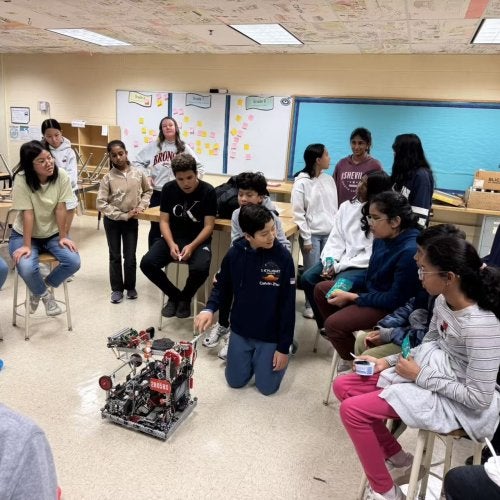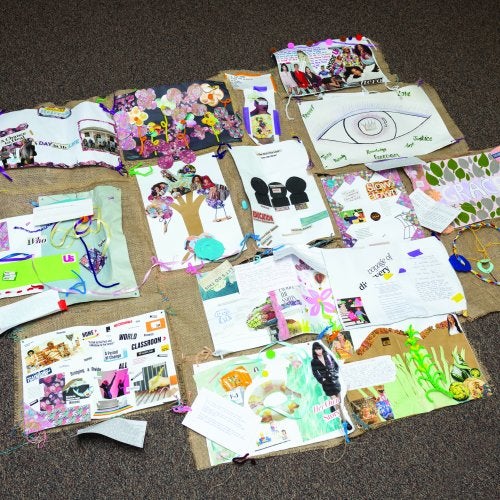
The notion of a “school for babies” may conjure up images of infants strapped uncomfortably into little chairs in front of little desks, wailing for their parents to come retrieve them. But fortunately, this image does not accurately reflect the experiences of infants in the early care and education centers that have emerged in recent decades. There continues to be a dire need for infant care in contemporary U.S. society, in which approximately 60% of infants’ mothers are in the work force (U.S. Department of Labor, 2009). However, current research indicates that most infants are in poor to mediocre care and that the cost of high-quality care is exorbitant for most families (National Institute of Child Health and Human Development, 2006; Zigler, Marsland & Lord, 2009). Further, many infants are in care situations — for instance, informal and unregulated child care — and as such are not exposed to the educational experiences that may promote their development (Zigler, Marsland & Lord, 2009).
Why is it important to begin education during infancy?
Complex learning occurs very early in life (Lally, 2013). Infancy is an unparalleled period of development, during which rapid and complex maturation of the human brain occurs. The exponential growth in brain cells, along with the refinement of physiological and psychological processes that accompany brain maturation, creates a sensitive period of development, a time in which infants are optimally capable of achieving specific skills (Zeanah et al., 2011).
During the first year of life, infants learn to use non-verbal communication to express their needs and wants, to solve rudimentary cognitive problems, and to use primary caregivers as a “secure base” from which to explore their surroundings. Throughout the second year of life, their expressive vocabulary increases exponentially and they become scientific problem solvers. The third year ushers in more sophisticated symbolic thinking, allowing for the emergence of pretend play and word combinations in language, as well as advancements in memory, problem-solving, and attention – all of which are critical facets of learning.
Unfortunately, not all infants display this developmental progress throughout the first few years of life. In fact, there is evidence that the achievement gap between low-income and middle-income children begins in the second year of life (Halle et al., 2009). So it is critical that we offer educational experiences to all children, especially those at risk for poor academic outcomes, in the first few years of life. These educational experiences cannot be a downward extension of preschool; they must be consistent with the developmental needs of infants. And importantly, these experiences must be high-quality, given the research that poor and mediocre care can result in negative outcomes for infants that may persist throughout childhood (National Institute of Child Health and Human Development, 2006).
What is high-quality education for infants?
High-quality infant care and education transcends the requisite health and safety standards which all programs have to meet – such requirements as frequent hand-washing, gloved diapering procedures, shedding shoes in infant rooms, and infant-centered feeding practices. Infant care and education that is high-quality is characterized by small, intimate spaces with at least one caregiver for three infants and a group size of no more than six infants (Lally, Griffin & Fenichel, 2003).
Just as importantly, the processes that occur in these classrooms must be designed to support the development of infants. Care and education that attends to infants’ needs for enduring relationships with primary caregivers, who are stable over time, can foster their cognitive, language, and social-emotional skills (Lally et al., 2003). Further, infant care and education experiences that are responsive to infants’ cues, following their lead and allowing them to drive an individualized curriculum, are best suited for their learning. Interaction with the caregiver – such as the turn-taking in non-verbal and verbal communication, emotional sharing and attunement, and the scaffolding of problem-solving – is the essential conduit through which infants learn and develop.
One of the critical messages conveyed by infant scholars and practitioners is that school readiness begins at birth (Lally, 2010). Zero to Three, an organization whose sole purpose is to ensure better environments for American babies, asserts that infants need stimulating experiences in 4 critical areas – language and literacy skills, thinking skills, self-control, and self-confidence – to prepare them for academic success (Lerner & Ciervo, 2004). The physical context, instructional strategies, and caregiver practices of infant care and education must be explicitly designed to address these areas.
Prioritizing Infants in Early Childhood Education
The overarching goal of early childhood education is to prepare children for formal schooling. Because many children, particularly those from impoverished backgrounds, enter formal schooling substantially behind their peers, there are myriad local, state, and federal policy initiatives to expand pre-kindergarten options for young children (Yoshikawa et al., 2014). However, most of these initiatives do not extend to infancy.
Two strands of evidence argue for increasing the availability and accessibility of high-quality early care and education during infancy. First, parents are clamoring for nurturing environments for their children in order for the parents themselves to be productive in the workplace. Secondly, early care and education from birth to the transition to formal schooling may compensate for the compromised home environments that some babies experience (Watamura et al., 2011; Jones Harden et al., 2012).
High-quality infant care and education is an economic and educational imperative. I can think of no better gift to future generations than providing our youngest children with nurturing, stimulating, and development-promoting experiences that prepare them not just for kindergarten but for learning over a lifetime.
Dr. Brenda Jones-Harden is an associate professor in the early childhood education program in the Department of Human Development and Quantitative Methodology. Her research looks at the development of young children exposed to toxic stress (e.g., maltreatment, foster care, trauma), as well as prevention science and program evaluation. She holds a Ph.D. in development/clinical psychology from Yale University.
References
Halle, T., Forry, N., Hair, E., Perper, K., Wandner, L., Wessel, J. & Vick, J. (2009). Disparities in Early Learning and Development: Lessons from the Early Childhood Longitudinal Study – Birth Cohort (ECLS-B). Washington, DC: Child Trends.
Jones Harden, B., Monahan, C. & Yoches, M. (2012). Infant/toddler care and high-risk families: Quality services for “omitted” children. In S. Odom, E. Pungello & N. Gardner-Neblett (Eds.). Infants, toddlers and families in poverty: Research implications for early child care. New York: Guilford.
Lally, J.R. (2010). School readiness begins in infancy. Kappan Magazine, 922(3), 17-21.
Lally, J.R. (2013). For our babies: Ending the invisible neglect of America’s infants. New York: Teachers College Press.
Lally, J.R., Griffin, A. & Fenichel, E. (2003). Caring for infants and toddlers in groups. Washington, DC: Zero to Three.
Lerner, C. & Ciervo, L. (2004). Getting ready for school begins at birth. Washington, DC: Zero to Three.
National Institute of Child Health and Human Development (2006). NICHD study of early child care and youth development. Washington, DC: Department of Health and Human Services.
U.S. Department of Labor (2009). Labor force participation of women and mothers. Retrieved from http://www.bls.gov/opub/ted/2009/ted_20091009.htm.
Watamura, S., Phillips, D., Morrisey, T., McCartney & Bub, K. (2011). Double jeopardy: Poorer social-emotional outcomes for children in the NICHD SEYYC experiencing home and child care environments that confer risk. Child Development, 82(1), 48-65.
Yoshikawa, H., Weilund, C., Brooks-Gunn, J., Burchinal, M., Espinosa, L., Gormley, W., Ludwig, J., Magnuson, K., Phillips, D. & Zaslow, M. (2013). Investing in our future: The evidence base on preschool education. Retrieved from http://fcd-us.org/resources/evidence-base-preschool.
Zeanah, C., Gunnar, M., McCall, R., Kreppner, J. & Fox, N. (2011). Sensitive periods. Monographs of the Society for Research in Child Development, 76(4), 147–162.
Zigler, E., Marsland, K. & Lord, H. (2009). The tragedy of child care in America. New Haven: Yale University Press.



